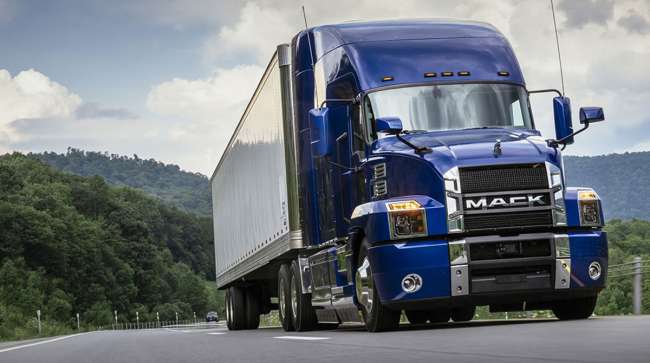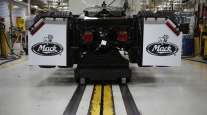Staff Reporter
January Class 8 Truck Orders Continue Monthly Decline

[Stay on top of transportation news: Get TTNews in your inbox.]
North American Class 8 orders in January hit 18,400 units, continuing a monthly decline since peaking in September, ACT Research reported.
The ACT Research preliminary data showed orders were down 13.6% from the same period last year when they were 21,300.
Supply chain issues at the time disrupted normal operations among truck makers. The year didn’t start picking up steam until about halfway through when orders shot up. September peaked at an all-time record of 53,700 units. It has been steadily going down since.
“Given how robust Class 8 orders were into year-end, the relative pause in January is not surprising,” said Eric Crawford, vice president and senior analyst at ACT.
Preliminary NA Class 8 net orders in December were 18,400 units, while NA Classes 5-7 net orders were 17,800 units. https://t.co/MFyfcd4ERp#truck #semitruck #trucking #transportation, #Class8, #ACT, #ACTResearch pic.twitter.com/x1s8kKYr8b — ACT Research (@actresearch) February 3, 2023
He added that over the final four months of 2022, nearly 159,000 Class 8 net orders were placed, a gain of 92% year-over-year, and only 8% below those placed over the same period in 2020. January’s orders represent the first year-over-year decline in five months.
The boost in orders toward the end of last year was likely an indication of continued pent-up demand. The trucking industry has been experiencing a very strong freight market throughout most of the coronavirus pandemic. But manufacturers struggled to get new trucks out because of supply chain issues and a lack of critical parts like semiconductor chips.

Randall
“It’s not surprising that industry numbers are down some in January after a strong December,” Mack Trucks North America President Jonathan Randall told Transport Topics. “Of course one data point doesn’t make a trend. We are managing our order books to maximize throughput and minimize any supply chain disruptions. Demand is still strong, and we have a healthy backlog of orders that remains solid.”
FTR, an economic and freight forecasting firm, also found in its preliminary data that truck orders declined for a fourth consecutive month in January. Its report noted that orders fell 25% month-over-month to 21,600 units. But it was still 2% higher compared to the year-ago period. Its report also noted orders came in at 303,000 units for the previous 12 months.
“Orders remain above replacement demand levels but are below recent production activity,” Eric Starks, board chairman at FTR, said. “As such, backlogs likely moved slightly lower in January.”
FTR noted in the report that with backlogs already solidifying production slots, it is no surprise that orders have fallen off their previous torrential pace. The report added that orders may have declined over the last four months, but they were still higher than year-earlier totals.
“Putting the order numbers into perspective is important,” Starks said. “In the first half of 2022, orders averaged just shy of 18,000 units per month. This suggests that recent activity is healthy, and January itself is up 2% year-over-year. This type of activity by fleets indicates that they are not overly concerned about an economic recession and continue to lock in build slots for the second half of 2023.”

Treadway
Kenworth Sales Co. operates a truck dealership network based out of West Valley City, Utah. The company provides truck sales, service, parts and financing services across seven states. It has a combined 1,200 employees across 31 locations.
“It’s all dictated by what the production capacity is and the manufacturers opening up to accept orders,” said Kyle Treadway, president of Kenworth Sales Co. “So, it’s kind of artificial to say that order intake has risen or fallen in that regard. But with that being said, yes, we are actively taking orders right now from customers for Q3 delivery, and the pace of that is a little slower than it was last quarter, but it’s still very active because we’re still taking care of pent-up demand.”
Treadway has also seen pushback from customers over pricing levels throughout the disrupted market. But he still has at least two buyers for every build slot because of how much pent-up demand there is. Larger fleets have been a major driver of that demand.
Want more news? Listen to today's daily briefing above or go here for more info
“What we are seeing here lately is a division between the large carriers, the large fleets, and the smaller, more independent, carriers,” Treadway said. “The large fleets have a certain buying schedule that they’re trying to maintain. They’ve been frustrated the last couple of years because of our inability to meet that schedule. But they are the ones who are continuing to buy and the smaller midsize fleets are the ones that are kind of slowing down their purchases.”
Treadway added the increase in interest rates has affected the financing for new equipment. But he noted the larger carriers have better negotiating power in that regard. They are also better prepared to weather a potential economic downturn.




